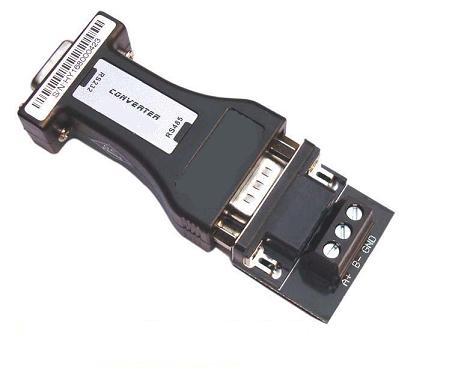What is RS422, RS485, comparison with RS232?
RS232 is well-known due to popularity of today’s PC’s, unlike the RS422 and RS485. These are used in industry for control systems and data transfers (small volumes, less than hundreds of Mb/s).
So, what is the main difference between RS 232 and RS 422 & 485? The RS 232 signals are represented by voltage levels with respect to ground.
There is a wire for each signal, together with the ground signal(reference for voltage levels). This interface is useful for point-to-point communication at slow speeds. For example, port COM1 in a PC can be used for a mouse, port COM2 for a modem, etc. This is and example of point-to-point communication: one port, one device. Due to the way the signals are connected, a common ground is required. This implies limited cable length? About 30 to 60 meters maximum. (Main problems are interference and resistance of the cable.) Shortly, RS 232 was designed for communication of local devices, and supports one transmitter and one receiver.

RS422 & 485 uses a different principle: Each signal uses one twisted pair(TP) line-two wires twisted around themselves. We’re talking ‘Balanced data transmission’, or ‘Differential voltage transmission’. Simply, let’s label one of the TP wires ‘A’ and the other one ‘B’. Then, the signal is inactive when the voltage at A is negative and the voltage at B is positive. Otherwise, the signal is active, A is positive and B is negative. Of course, the difference between the wires A and B matters. For RS 422 & 485 the cable can be up to 1200 meters (4000 feet) long, and commonly available circuits work at 2.5 MB/s transfer rate.
What is the difference between RS 422 and RS 485? Electrical principle is the same : both use differential transmitters with alternating voltages 0 and 5V. However, RS is intended for point-to-point communications, like RS 232. RS 422 is intended uses two separate TP wires, data can be transferred in both directions simultaneously. RS 422 is often used to extend a RS 232 line, or in industrial environments.
RS 485 is used for multiply-point communications: more devices may be connected to a single cable- similar to e.g ETHERNET networks, which use coaxial cable. Most RS 485 systems use Master/Slave architecture, where each slave unit has its unique address and responds only to packets addressed to this unit. These packets are generated by Master (e.g PC), which periodically polls all connected salve units.